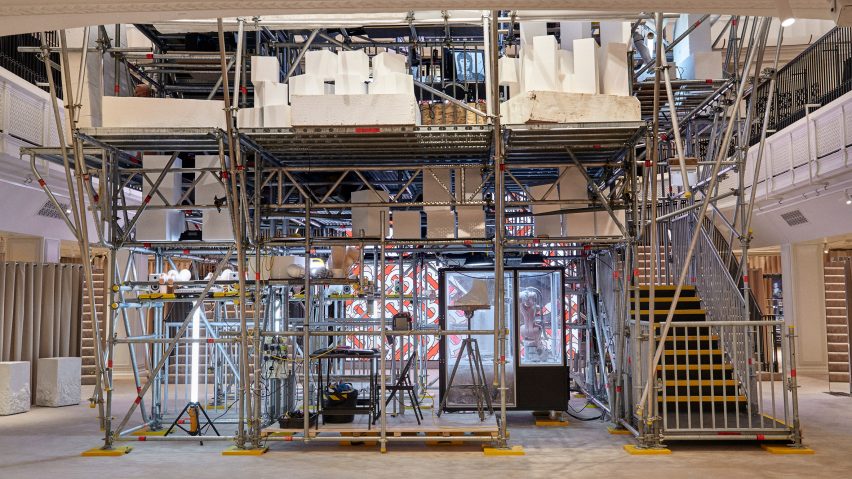
Robot produces polystyrene sculptures inside Burberry's London store
A robot appears to mill three-dimensional sculptures from within a framework of scaffolding in Burberry's shop on London's Regent Street.
British artist Graham Hudson wanted to explore the "idealism and horror of human making" in the robotic installation, called Sisyphus Reclined.
While the Kuka robot appears to be chiselling three-dimensional objects out of blocks of polystyrene, it is actually just revealing objects that are already made.
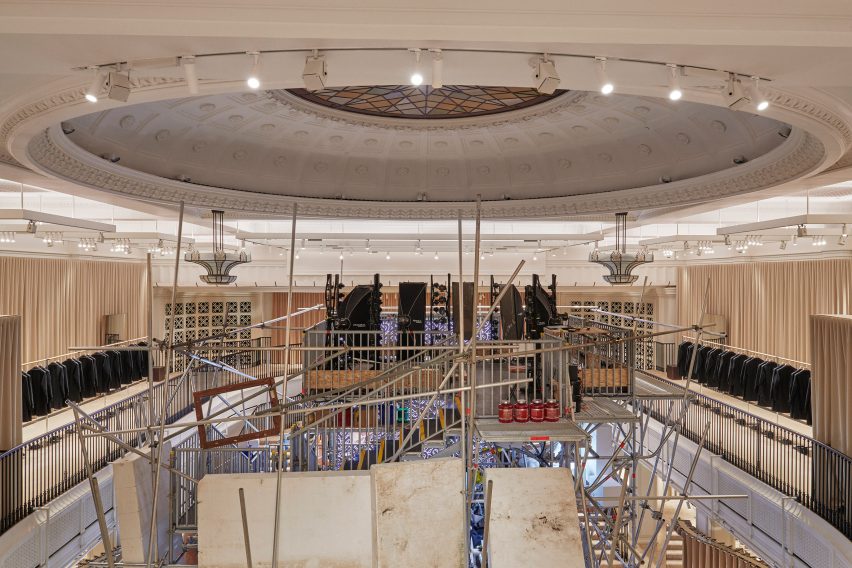
The multi-faceted installation is contained with a web of repurposed metal scaffolding that fills the atrium of the three-storey space.
Designed as a "nod to ghosts and collective memories", the scaffolding poles are intended to suggest transience and unforeseen circumstances. "A month ago, the scaffold used was functioning elsewhere across the city. It is an echo, a frame for something else," the artist told Dezeen.
The Kuka robot is located at its centre. According to Hudson, the objects it appears to be carving draw on a vast range of references, "from classicism and fiction to bodybuilding, ideals and everyday realities".
All of the objects were actually made in advance. "The sculpture is already complete within the polystyrene block before I start my work," explained the artist. "It is already there, I just have to chisel away the superfluous material."
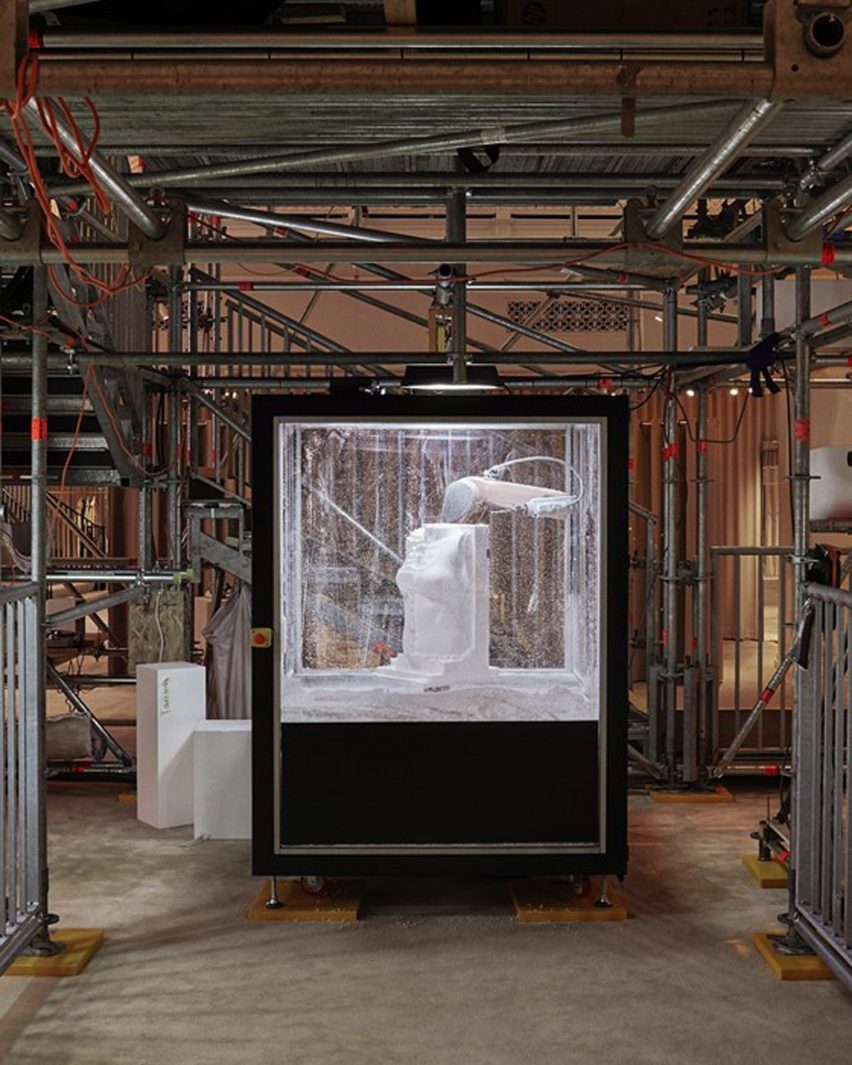
The brief given to Hudson by Burberry's new chief creative officer Riccardo Tisci was fairly open. He simply asked that the sculpture, which will remain at the Regent Street store until 26 October, should reference the heritage of both the brand and the building's history, as a theatre and then later an art gallery.
"The curtains and carpets create a soundproofing that is emotive and nostalgic," said Hudson. "It harks back to the grandest days of cinema."
Hudson also looked to the brand's history as an outfitter of trench coats for British soldiers during World War I, which he depicted through the limbless figures. These are modelled on classical marble statues found at art institutions like the British Museum, the Louvre and the Metropolitan Museum of Art.
"But these bodies are 21st century souls," Hudson explained, "evocative of war zones far away and psychological states close to home: cadavers that are fraught with dissociative disorders and the body dysmorphia of automation."
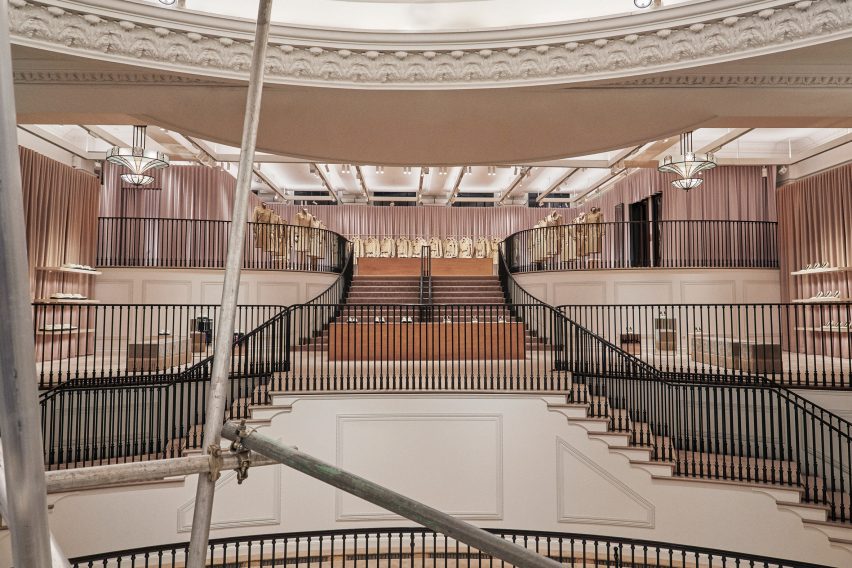
A series of turntables play house music acapellas in the space, intended to represent the voices of the newly carved subjects.
"The history of house music is associated with the disenfranchised and minorities of the 1980s," said Hudson, explaining that he modified the speed of the tracks to "slip and slide between horror and ecstasy."
Hudson spent three months drawing plans on computer software (CAD), before spending three weeks constructing the piece and living on site. "It was a lot of engineering creativity: digging out old blueprints as well as going under the floor with torches, to connect to the original floor," he said.
The artwork's name is a reference to the character of Sisyphus in Greek mythology, who was sentenced by the gods to an eternity of rolling a boulder up a hill and watching it roll down again.
"I think he speaks to the zeitgeist, with the repetitive strain injury of forever rolling the boulder up the hill. A condition reserved in the 21st century for the desk bound typer or the tennis elbow and bodybuilder."
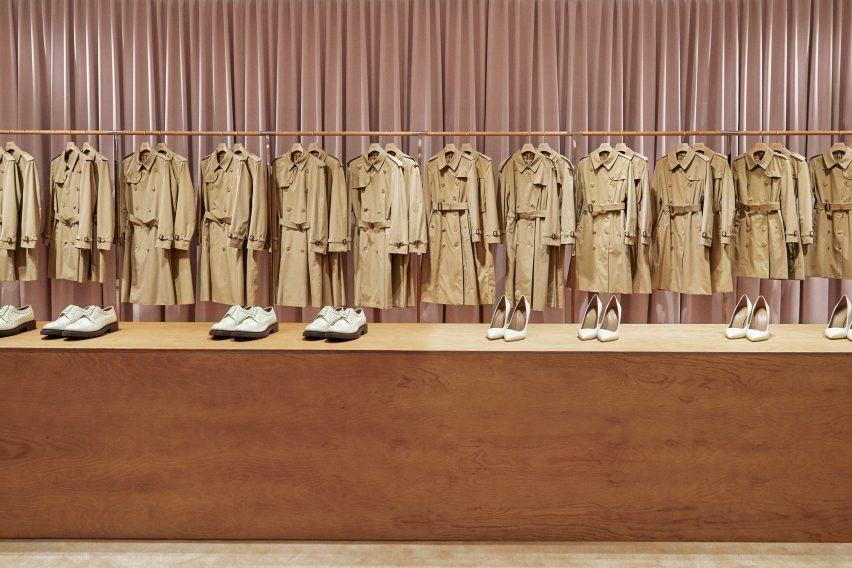
Riccardo Tisci took over from previous Burberry chief creative officer Christopher Bailey in March 2018 – a change marked by a new graphic identity for the fashion house by British graphic designer Peter Saville.
"It was interesting as Riccardo's work is built on references and concepts that speak well beyond fashion. Whether it is his use of sub-cultures and the underground, his work's relation to the dirt and texture of the streets," added Hudson.